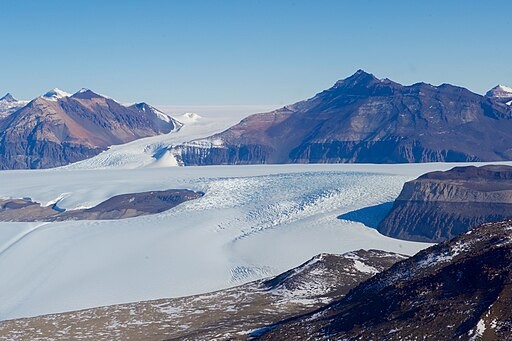Most people imagine Antarctica as a cold continent covered in ice. This is actually right. In fact, 90% of the global freshwater is locked up in Antarctica's permanent ice sheet. Meanwhile, the idea of a desert usually comes with images of rippled sand dunes and shimmering heat. So how is it possible that a cold, ice-covered continent like Antarctica is actually considered a desert?

(Photo : Wikimedia Commons/ U.S. Department of State)
What is a Desert?
A desert is defined by the amount of precipitation - such as rain, snow, fog, and mist - in an area. Experts agree that a geographic area is classified as a desert if it receives less than 25 centimeters (10 inches) of precipitation in a year.
Due to low levels of precipitation, these regions usually have very little plant coverage and may lack sustainable water sources. It should be noted that precipitation levels - not geology, wildlife, or temperature - are what define a desert.
There are many different types of deserts, each with its own unique characteristics. All of them feature a barren, windswept landscape, which makes it difficult for plants and animals to gain a foothold on land.
Polar deserts are located at the Earth's pole, such as the Arctic desert at the North Pole and the Antarctic desert at the South Pole. Subtropical deserts, like the Kalahari, the Tanami, and the Sahara, are formed by the movement of air circulation patterns. On the other hand, coastal deserts, such as the Namib desert in Southern Africa and the Atacama Desert in Western South America are located on the west coast of continents between 20° and 30° latitude.
There is also the rain shadow desert which exists near mountain ranges that cause prevailing winds to rise. Finally, the interior deserts or inland deserts are located far from the coast, near the centers of continents.
READ ALSO: Why Are the Poles So Cold? Exploring the Geology of Arctic and Antarctic Regions
What Makes Antarctica a Desert?
Antarctica fits well within the definition of a desert. According to the Australian Antarctic Programme, the average amount of precipitation over the entire continent is estimated to be around under 6 inches (15 centimeters) per year.
The entire continent of Antarctica is a desert. As a matter of fact, it is the driest place on the planet. Most of its precipitation falls along the coastal areas where the average reaches 8 inches (20 centimeters) annually. Much less moisture falls further inland, such as the McMurdo Dry Valleys which have not seen any precipitation in millions of years.
The dryness in Antarctica is primarily due to its coldness. Colder air holds less moisture than warm air, which means that it is not easy for clouds to form. More snowfalls occur near the coast since warmer air can move open water and gather sufficient moisture needed to make clouds.
Researchers working in Antarctica claim that the air in this continent is so dry that potato chips and popcorn never go stale. Likewise, wet towels and hair quickly dry after a shower, and mildew and molds are practically non-existent.
Aside from its status as a desert, some regions of Antarctica are also tundra. A tundra is defined as treeless, mostly level or rolling land in a cold climate. They can be found mostly north of the Arctic Circle and above the timberline on very high mountains.
RELATED ARTICLE: What Is the Coldest Inhabited Place on Earth Today? Its Coldest Day Plunged to -71.2 C
Check out more news and information on Antarctica in Science Times.














